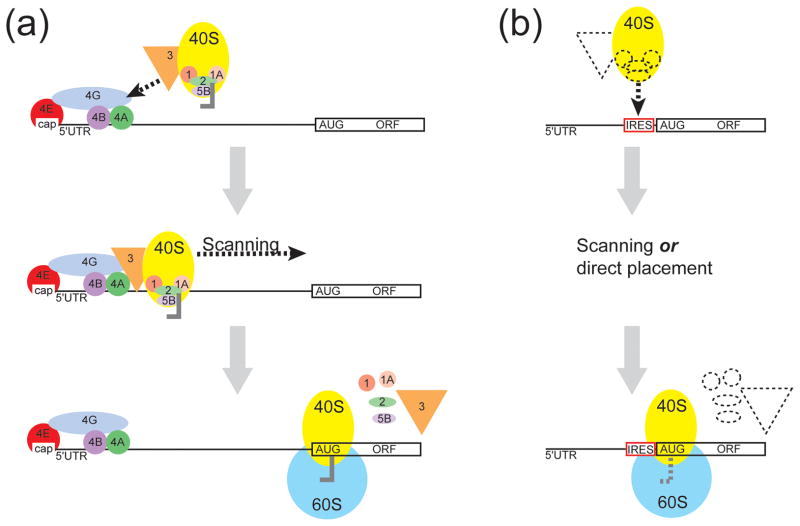Figure 1.
Comparison of the mechanism of cap-dependent and cap-independent translation initiation in eukaryotes. (a) In cap-dependent translation initiation, the m7G cap (cap) is bound by eIF4E (red) and this leads to the binding of additional initiation factors. Recruitment of the 40S ribosomal subunit (yellow) and associated factors occurs through the interaction of eIF3 (orange). The 40S subunit-containing preinitiation complex then scans to the start codon. Start codon recognition and GTP hydrolysis allows the initiation factors to dissociate and the 60S ribosomal subunit joins to create a translationally competent 80S ribosome. (b) In cap-independent internal translation initiation, RNA sequences called internal ribosome entry sites (IRESs) recruit the 40S subunit independently of the cap. The mechanism behind 40S recruitment varies between different IRES RNAs and may or may not require the use of additional initiation factors (dashed shapes). Depending on the IRES RNA, the 40S is either recruited directly or scans to the start codon. Once the start codon is recognized, the initiation factors dissociate (if used) and the 60S ribosomal subunit joins.

